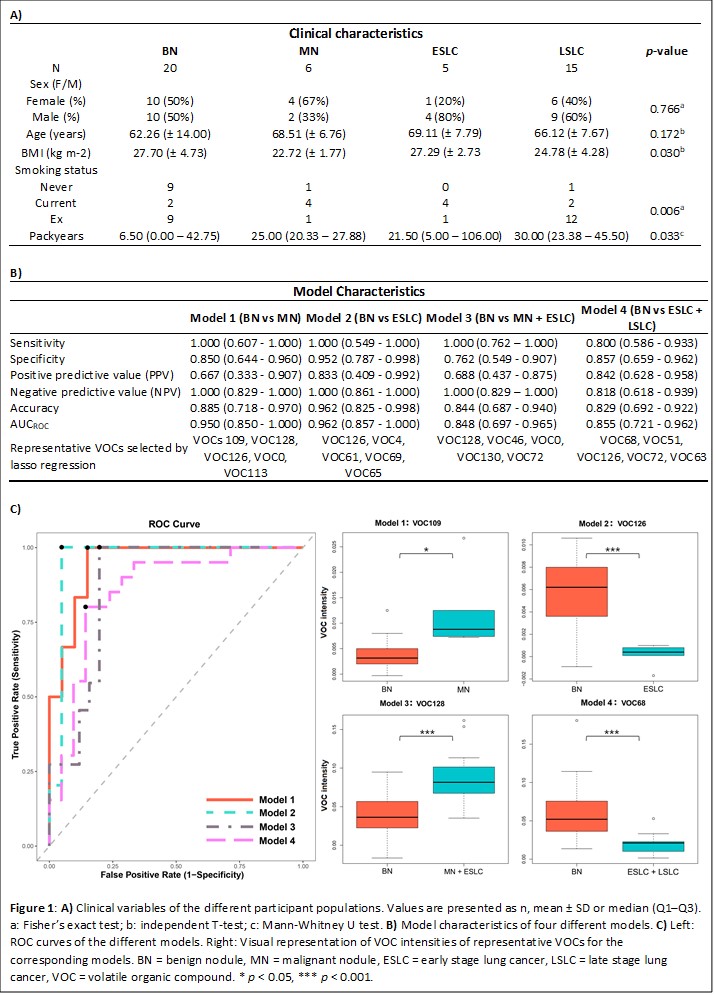Abstract
Background
Lung cancer (LC) is the leading cause of cancer-related death worldwide, accounting for almost a quarter of all cancer deaths. With the widespread use of (low-dose) Computed Tomography (CT), both in daily practice as for LC screening, solitary pulmonary nodules (SPNs) are more frequently encountered. Assessment of the likelihood of malignancy in SPNs remains challenging. Volatile organic compounds (VOCs) in exhaled breath have been found to detect LC as they reflect (patho)physiological processes (Janssens E., 2020). However, their role in nodule management remains unknown.
Aim
To assess whether VOC patterns in breath of individuals differentiates between benign/malignant SPNs and LC.
Methods
Breath samples were obtained from individuals with benign SPNs (BN), malignant SPNs (MN), and LC patients early stage (I-II, ESLC) and late stage (III-IV, LSLC). It is assumed that lung cancer starts as an intrapulmonary nodule, therefore SPNs are considered preliminary stages of LC. Proof of benignity or malignancy was obtained either by examination of nodule tissue or (absence of) growth during follow up. VOCs in the breath samples were analysed by multicapillary column/ion mobility spectrometry (MCC/IMS).
Results

Conclusions
VOC analysis was able to distinguish individuals with a BN from those with a MN (100% sensitivity), suggesting a potential role for breath analysis in nodule management and early detection of LC.